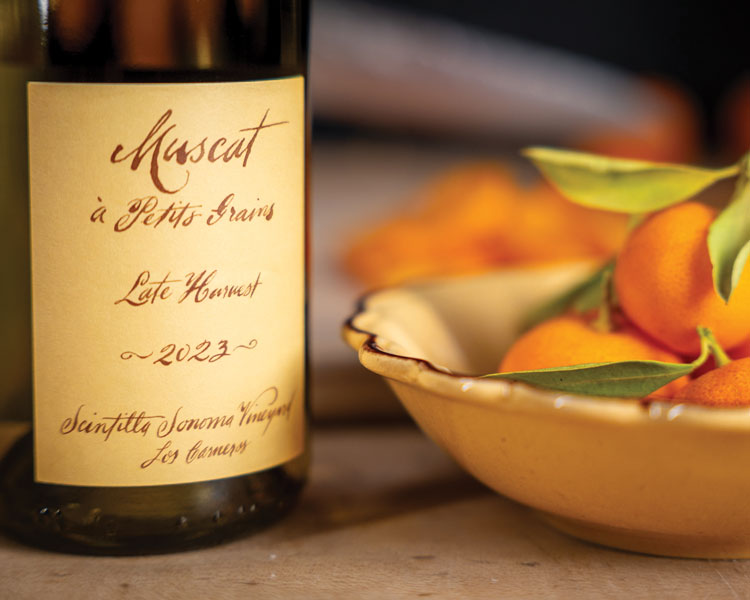The Rusty Grape…
and Rusty the Steer!
The lumbering bovine was not afraid… and why should he be? After all, he outweighs me by nearly 2,000 pounds. Yet he approached with a gentleness I would expect of a canine companion, huge nostrils sniffing as he looked me in the eye. I extended my hand to give him a pat when his tongue jutted out, licking with a velcro-like texture that almost sucked my hand into his mouth. The big creature then presented his side as if I would know to give him a rub down.
Rusty has lived almost his entire life on the Wilding Farm. Some fifteen years ago, he was brought there as a calf in a program to teach people with Down syndrome to work with animals and learn how to farm. The old Vine Village, as it was called before we acquired it, was a magical place where the residents could bottle-feed a calf, work with the goats, pick apples, make vinegar, and create art and music. The family before us ran it for fifty years with love and care before the pandemic and their age forced them to close and put the property on the market.
We agreed to keep and care for the animals and let them live out their lives on the farm. But it was no burden, as it allowed us to expand upon our goal of creating a biodiverse environment where the vineyards, though important, are just one part of a vital and healthy ecosystem.
Pinot Gris has nothing to do with Rusty the Steer except that Pinot Gris is a “rust” colored grape, and we feel that biodiversity makes better wine and is healthier for the planet. Animals can graze the vineyards, clear overgrown land, and add nutrients to the soil with their waste. They also keep farming interesting. Having the animals on the farm allows a break from routine to work with them, plan where their presence will be most beneficial, and just know they are living their best lives. After all, happy bovines and happy people make better wine.
Rob Sinskey




